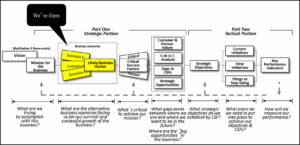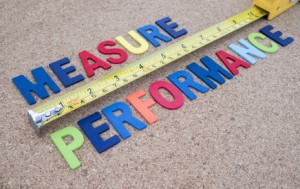Organizations need performance targets and a process of measuring them for a number of reasons:
|

Ensuring You Have Strategic Performance Measures
Measurement is the first step that leads to control and eventually to improvement.
- IF you can’t measure something, you can’t understand it.
- IF you can’t understand it, you can’t control it.
- IF you can’t control it, you can’t improve it.
We must establish meaningful performance measures and excel at measurement management in order to drive our strategy. Knowing what not to measure is just as important as knowing what to measure, so we must ensure that we understand the drivers of business success in each facet of our business, and zero in on measuring the right things.
“How” we achieve our targets is important for long-term success. While achieving performance targets is important, it alone is not enough. To be successful in the long-run, we must identify “strategic drivers” that are required to achieve the strategic objectives, and improve our performance on these strategic drivers. This focus on “how” results are achieved, and not just on whether they are achieved, ensures that leaders achieve success in a way that builds for the future, rather than achieving short-term success “at any cost.”
Most businesses have financial models for their business. Usually they are used for budgeting and financial planning purposes, and reside with the CFO.
Using existing models, we encourage the CFO to develop three or four simple scenarios for executive discussion.
Each of these scenarios encompasses a number of assumptions. Try to identify them and write them down. Then, based on some thinking about these different scenarios and the underlying assumptions, translate this into numbers and represent them in your business model.
Learn how to add strategic performance measures and create alternative business scenarios to your plan.

